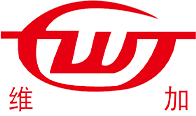- Afrikaans
- Albanian
- Amharic
- Arabic
- Armenian
- Azerbaijani
- Basque
- Belarusian
- Bengali
- Bosnian
- Bulgarian
- Catalan
- Cebuano
- Corsican
- Croatian
- Czech
- Danish
- Dutch
- English
- Esperanto
- Estonian
- Finnish
- French
- Frisian
- Galician
- Georgian
- German
- Greek
- Gujarati
- Haitian Creole
- hausa
- hawaiian
- Hebrew
- Hindi
- Miao
- Hungarian
- Icelandic
- igbo
- Indonesian
- irish
- Italian
- Japanese
- Javanese
- Kannada
- kazakh
- Khmer
- Rwandese
- Korean
- Kurdish
- Kyrgyz
- Lao
- Latin
- Latvian
- Lithuanian
- Luxembourgish
- Macedonian
- Malgashi
- Malay
- Malayalam
- Maltese
- Maori
- Marathi
- Mongolian
- Myanmar
- Nepali
- Norwegian
- Norwegian
- Occitan
- Pashto
- Persian
- Polish
- Portuguese
- Punjabi
- Romanian
- Russian
- Samoan
- Scottish Gaelic
- Serbian
- Sesotho
- Shona
- Sindhi
- Sinhala
- Slovak
- Slovenian
- Somali
- Spanish
- Sundanese
- Swahili
- Swedish
- Tagalog
- Tajik
- Tamil
- Tatar
- Telugu
- Thai
- Turkish
- Turkmen
- Ukrainian
- Urdu
- Uighur
- Uzbek
- Vietnamese
- Welsh
- Bantu
- Yiddish
- Yoruba
- Zulu
Optimal Placement of Seating Nipple in Tubing Systems for Enhanced Performance
Understanding Seating Nipples in Tubing Importance and Applications
Seating nipples play a crucial role in the world of tubing systems, particularly in the oil and gas industry. These specialized components serve as connectors that facilitate the efficient and secure junction between different segments of tubing. Their design and functionality significantly impact the performance and safety of various operations, making them an essential consideration for engineers and technicians alike.
What is a Seating Nipple?
A seating nipple is a particular type of fitting used primarily to provide a seal and a secure connection between two sections of tubing. It is often employed in scenarios where two or more strings of tubing need to be reliably joined, such as in wellbore applications in oil drilling or production operations. The design typically includes internal profiles that allow for an interlocking mechanism, ensuring that once joined, the connections are both tight and resistant to leaks or any form of fluid escape.
The primary function of a seating nipple is to allow for the easy retrieval and replacement of tubing components. In the event that a section of tubing needs to be pulled from the well for inspection or replacement, the seating nipple provides a safe point at which the tubing can be detached without compromising the integrity of the system.
Importance of Seating Nipples
1. Well Integrity In oil drilling and production, maintaining the integrity of the well is crucial. Seating nipples ensure that pressure is distributed evenly throughout the tubing, preventing potential failures that could lead to blowouts or spills.
2. Ease of Maintenance One of the most significant advantages of using seating nipples is their contribution to the ease of maintenance. Operators can quickly disconnect and reconnect sections of tubing, making routine inspections and repairs less time-consuming and more efficient.
seating nipple in tubing

3. Enhanced Safety With the secure connection that seating nipples provide, there is a reduced risk of leaks that can result in hazardous situations. This is particularly important in high-pressure environments where the risks associated with fluid escape can be severe.
4. Adaptability Seating nipples often come in various sizes and designs, which makes them adaptable to different types of tubing and operational requirements. This versatility ensures that engineers can find suitable solutions for specific challenges in the field.
Applications in the Industry
The applications of seating nipples extend beyond just oil and gas extraction. Industries that rely on high-pressure tubing systems can benefit from seating nipples. For example, in chemical processing plants, similar connections help maintain the integrity of fluid transport systems. Moreover, they are also employed in geothermal energy systems, where operational pressures must be meticulously managed.
In drilling operations, seating nipples can facilitate the deployment of downhole equipment, such as perforating guns or logging tools. Their design allows for the quick attachment and detachment of these tools, promoting efficient drilling and data collection processes. Additionally, in large-scale construction and infrastructure projects, seating nipples can be used in pipeline systems, ensuring that connections are tight and secure over long distances.
Conclusion
Seating nipples are indispensable components in various tubing systems, providing essential benefits such as well integrity, ease of maintenance, enhanced safety, and adaptability to different applications. Their role in the oil and gas industry is particularly notable, as they contribute significantly to the efficiency and safety of drilling and production operations. As industries continue to evolve and expand, the demand for reliable and effective tubing solutions will undoubtedly highlight the importance of seating nipples, making ongoing innovation in this area essential for future developments. Understanding their functionality and applications will enable operators and engineers to optimize their use, ensuring safer and more efficient operations across the board.
-
Tubing Pup Joints: Essential Components for Oil and Gas OperationsNewsJul.10,2025
-
Pup Joints: Essential Components for Reliable Drilling OperationsNewsJul.10,2025
-
Pipe Couplings: Connecting Your World EfficientlyNewsJul.10,2025
-
Mastering Oilfield Operations with Quality Tubing and CasingNewsJul.10,2025
-
High-Quality Casing Couplings for Every NeedNewsJul.10,2025
-
Boost Your Drilling Efficiency with Premium Crossover Tools & Seating NipplesNewsJul.10,2025







